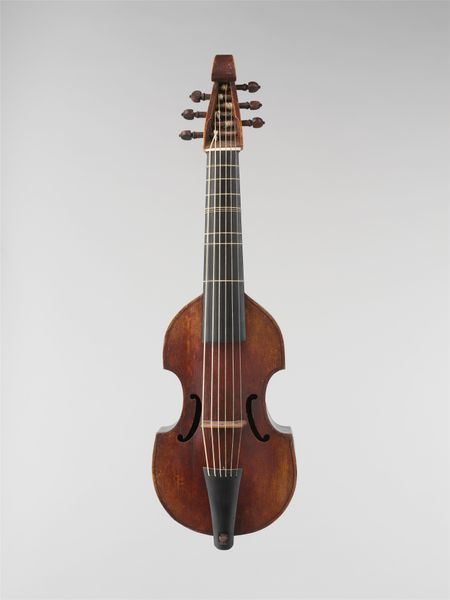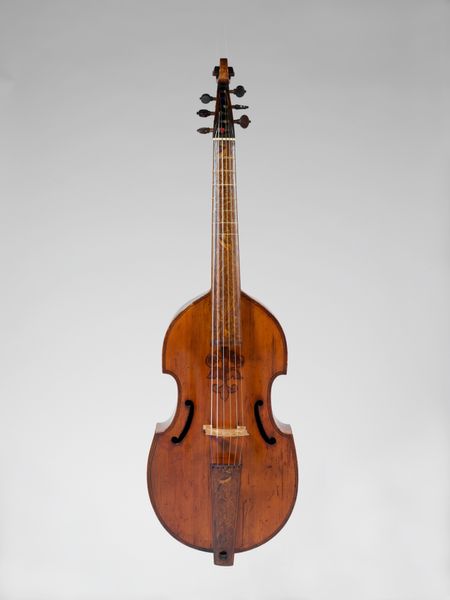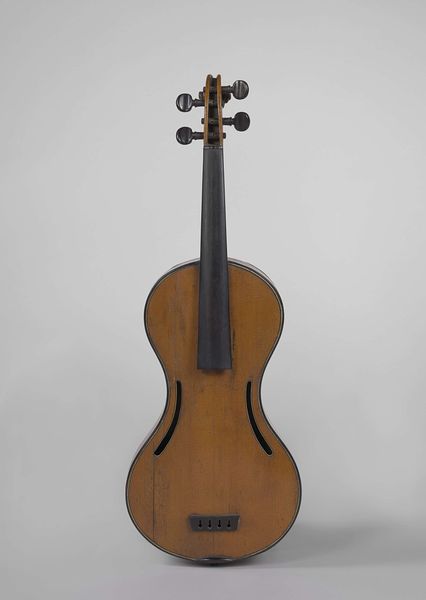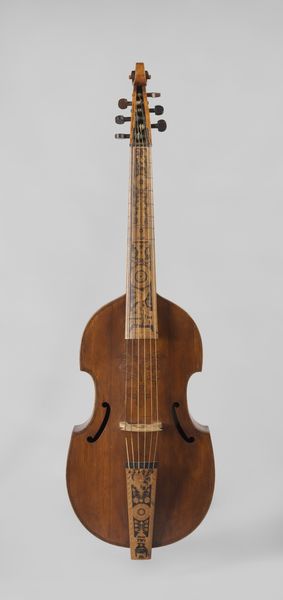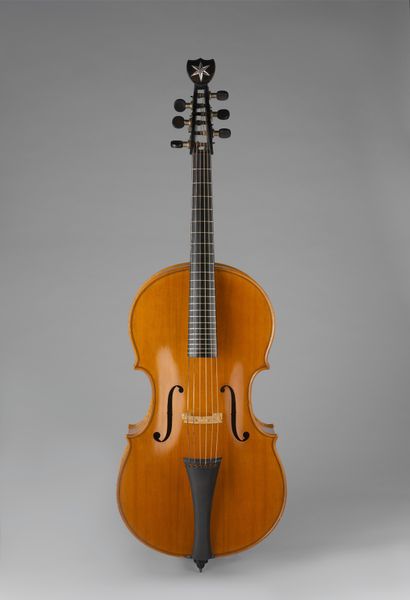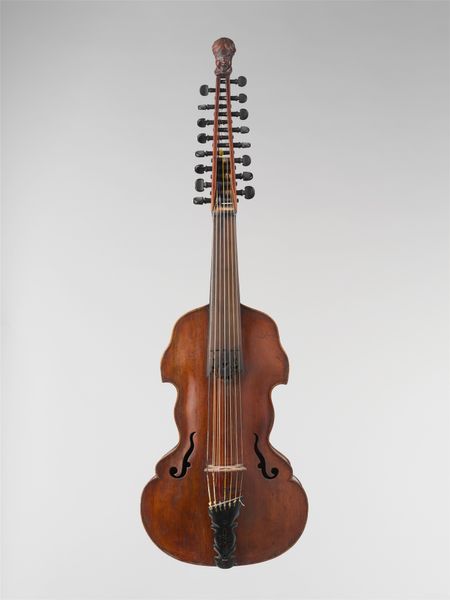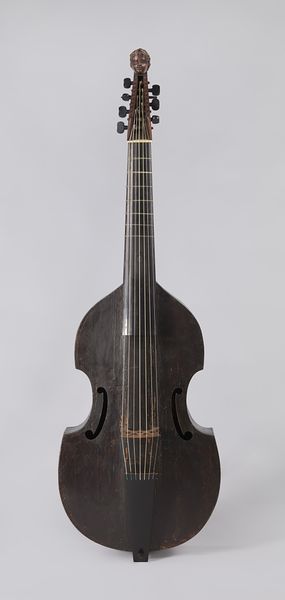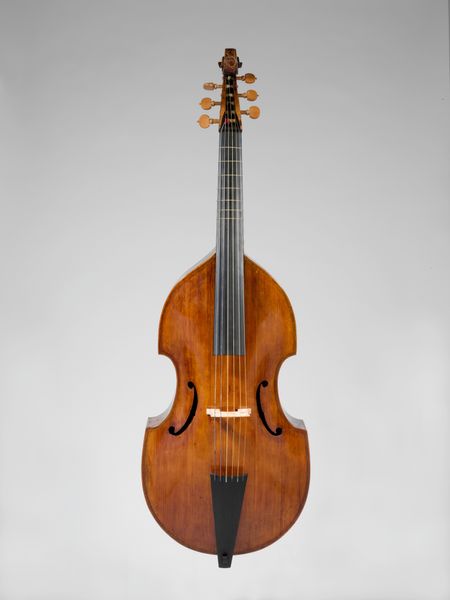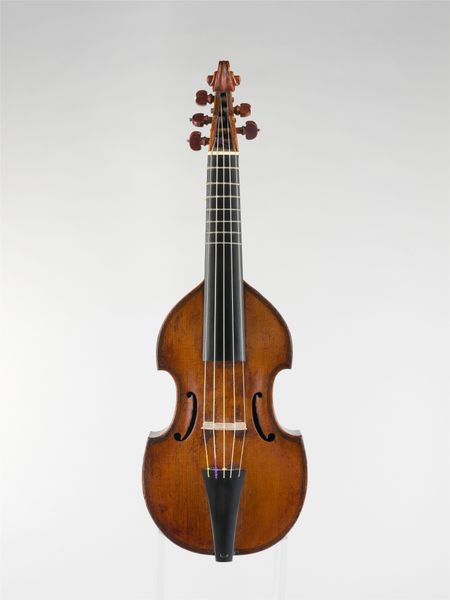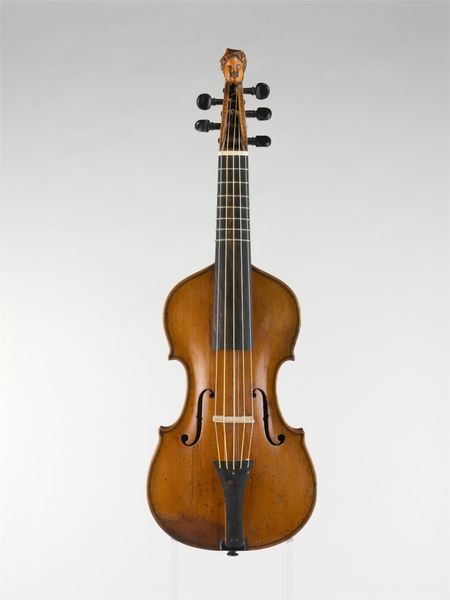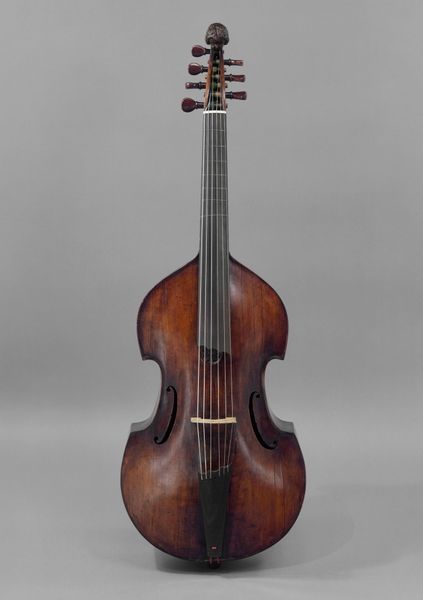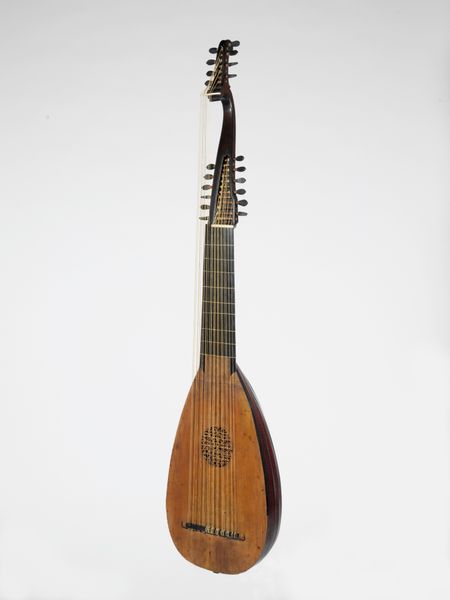
wood
#
baroque
#
wood
Dimensions: height 125 cm, width 41 cm, depth 14 cm
Copyright: Rijks Museum: Open Domain
Editor: We're looking at a Baroque beauty here—a Bass Viol crafted in 1708 by Pieter Rombouts. Made of wood, this piece feels almost stately. With those sloping shoulders and elegantly carved headstock, it has a rather quiet dignity about it. What stories do you think it could tell, having witnessed three centuries go by? Curator: Oh, if instruments could talk! I see echoes of candlelight and courtly dances in this viol. Notice the figurehead carving at the top – isn't it evocative? In a world rapidly standardizing toward violin forms, the viol retained a link to earlier Renaissance traditions. And consider the number of strings - six or seven strings versus the violin family's four allowed for a greater range of harmonic complexity in the music. Do you feel a resonance between its visual design and what its music might have been like? Editor: Definitely. The detail and craft seem to hint at layered and ornate melodies. The wood also makes it feel so grounded and real somehow compared to something shiny. Curator: Grounded indeed. It speaks to the intimate salon music-making of the period; you can imagine the player nestled close, sharing not roaring this sound but almost confiding it. What I see isn't so much a solo performer, as something akin to intimate conversation. Perhaps chamber music, a quiet debate with equals? Editor: I hadn’t thought about it like a conversation, but that feels very accurate to its personality! Thank you, I’m learning to think of instruments as active voices now rather than passive objects! Curator: My pleasure, truly. That’s what makes this field alive—our dialogue with objects across the ages, you can make an art history symphony here.
Comments
No comments
Be the first to comment and join the conversation on the ultimate creative platform.

